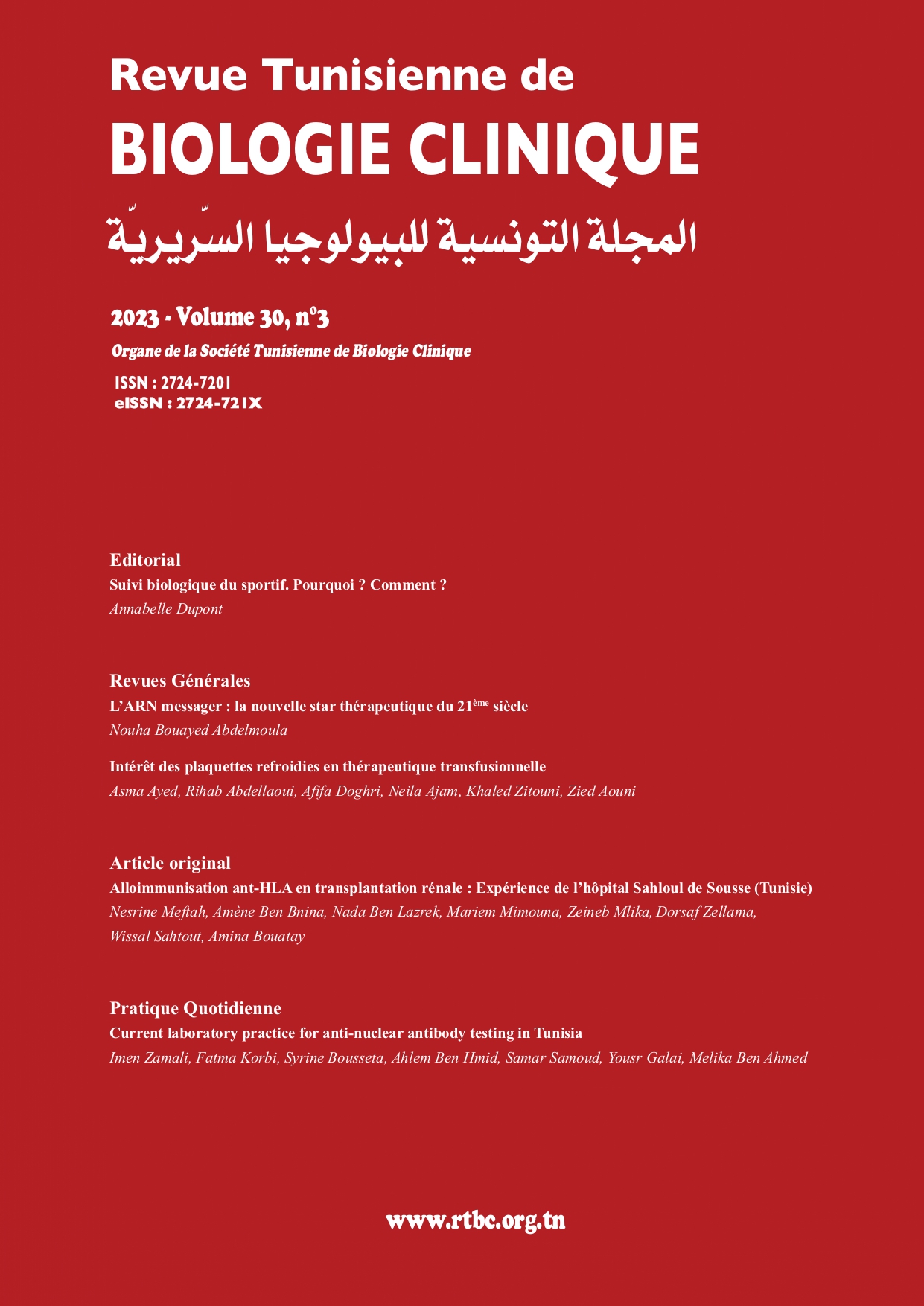Abstract
Background: Antinuclear antibodies (ANA) testing results are crucial to autoimmune disease diagnostic,classification, monitoring, and prognosis. However, there is still little standardization for AAN testing and reporting. To achieve this, surveys help gaining insight into routine practices and point out differences between laboratories. The present survey was conducted to evaluate current laboratory practices in ANA testing in Tunisia and propose recommendations. Design and Methods: A survey of 26 questions was sent to 250 biologists of both private and public sectors involved in autoimmunity diagnostics in Tunisia. Carried out by the Google forms application for 5 months (September 2021-February 2022), the survey aimed to gather insights into prevailling practices. Results: The participation rate reached 45% corresponding to 113 biologists. Indirect immunofluorescence (IFI) on HEp-2 emerged as the predominant performed ANA screening method (93.3%). The screening dilution was 1:80 in 51.2% of laboratories. Almost half (48.8%) of them used a distinct screening dilution in children. In case of positivity, all laboratories reported a titer and a fluorescence pattern. We noticed heterogeneity in reporting the different ANA patterns as well as in the diagnostic algorithm especially between private and public sector laboratories. Regarding quality control (QC), only 32.6% of participants regularly performed an internal QC and 17.8% participated to an external QC program. Conclusion: This survey sheds light on the current laboratory practices in ANA testing in Tunisia. To the best of our knowledge, this is the first African study looking to the practice of AAN screening. Overall, despite the limited number of laboratories performing this analysis, most of them seem to follow international recommendations regarding the technique used, interpretation of fluorescence patterns and titration. Nevertheless, progress remains to be made, particularly regarding the screening dilution and quality control measures.

This work is licensed under a Creative Commons Attribution 4.0 International License.
Copyright (c) 2023 Revue Tunisienne de BIOLOGIE CLINIQUE

